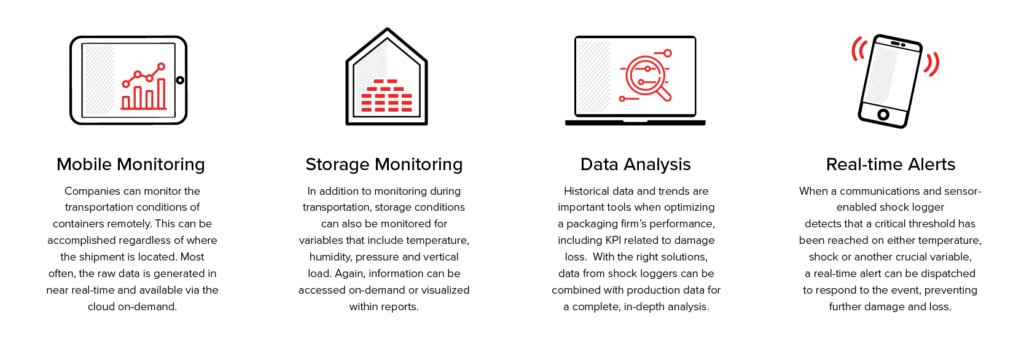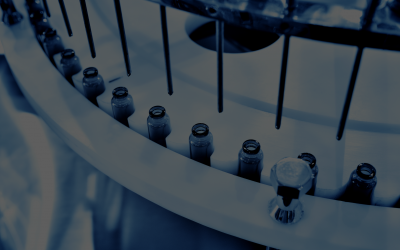Shock loggers or shipping monitors are used for reducing transport damages to goods, which in our world means a reduction in packaging damage and loss.
Translated, that means optimization and savings. I might as well bring up the bottom line right away, because this is what is driving the use of these solutions.
What is a Shock Logger or Shipping Monitor?
Shock Loggers and Shipping Monitors provide dock to dock measurements of pretty much anything you want to measure. Although shock (bumps, pressure, etc.) and temperature are the two most common measurements called for, devices that measure humidity, tilt, acceleration, light exposure, location and any amount of vibration, impact or pressure are also available.
Similar to the types of damaging variables that we measure in the production process with smart in-line sensors, these types of variables most often contribute to glass breakage, denting damage, crush damage and other types of container or packaging damage.
Sometimes referred to as transport condition monitoring, information from shock loggers, pressure loggers, temperature loggers and other shipping monitor devices can be delivered in real-time, though often is stored for study at journey’s end. The information can also be connected to other applications via IoT technology to be analyzed.
Why Packaging Operations Should Use Shock Loggers or Shipping Monitors:
By having complete visibility throughout shipping and storage you are soon able to identify the when, where and how damage to containers is taking place. Data analysis results in good decisions. Knowing the root cause enables action and soon you can begin to quantify cost savings as the resulting improvements take place.
The benefits of using more sophisticated sensor-enabled devices to enable transportation condition monitoring are similar to that of a connected supply chain:

How Packaging Operations Gain Value by Monitoring Conditions During Transportation:
One of the industry’s biggest challenges is that billions of dollars are lost each year through damage during the shipping, handling and storage process; and yet, the cause of this loss is virtually unknown. The information gained through shipping monitoring allow a loss prevention strategy to be put in place.
“Employing enhanced technology in warehousing and transportation such as sensors, localization, and continuous communication systems has an operational benefit in supply chain management,” explained Alexander Skorna at the International Conference on Management of Technology.
The added value for packaging firms which deploy monitoring tools:
– Ability to quantify cost savings
- Dock to dock measurement of loss
– Reduction of transportation damage
– Preventative approach to food safety and loss prevention
– Traceability
– Identification of root cause of damage
– Quality planning
Understanding that business application, Otto Schacht, Executive Vice President of Sea Logistics at industry giant Kuehne & Nagel was once quoted as saying that based on the declining price of sensors, he believed that soon all containers would be equipped.
Otto was obviously referring to shipping containers, but we feel there is a business case to be made for packaging containers as well.
“Employing enhanced technology in warehousing and transportation such as sensors, localization, and continuous communication systems has an operational benefit in supply chain management.”






